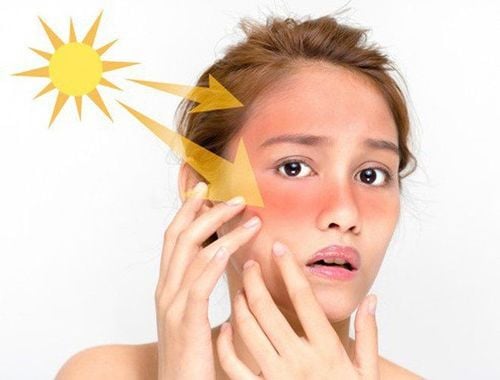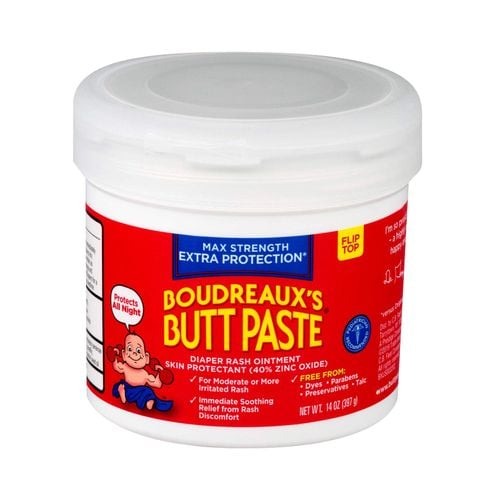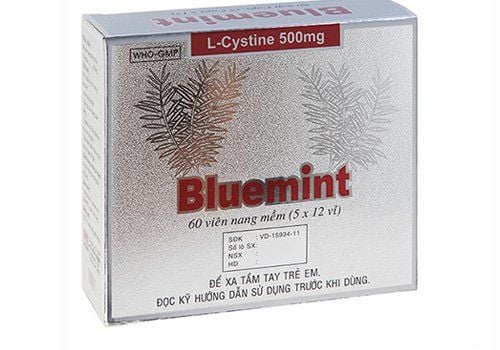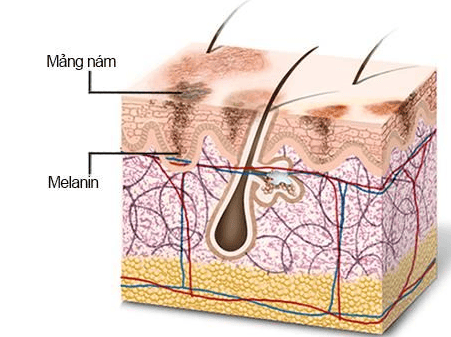This is an automatically translated article.
Melanin is a natural skin pigment, the color of hair, skin and eyes in humans and animals mainly depends on the type and amount of melanin present in the body. Research has found that melanin can help protect skin from UV rays. So what is melanin? And what diseases are related to melanin?
1. What is melanin?
Melanin is the pigment that gives color to human skin, hair and eyes. Dark-skinned people have more melanin in their skin than light-skinned people. Melanin is produced by cells called melanocytes (melanocytes). In addition, melanin has the ability to protect the skin from sun damage, and melanocytes increase melanin production in response to sunlight. Freckles, which appear in people of all different races, are small and concentrated areas of increased melanin production.
Everyone has the same number of melanocytes, but some people make more melanin than others. If your melanocytes make only a small amount of melanin, your hair, skin, and irises may be very pale. If your melanocytes make more melanin, your hair, skin, and eyes will appear darker.
The amount of melanin your body makes depends on your genes. If your parents had more or less pigmentation, you'll probably be like them. When you're in the sun, your body makes more melanin. It can help protect the body from harmful ultraviolet (UV) rays. But it's not enough to keep you safe from the sun. Your skin is already damaged if you get sunburned or turn a little darker. That's why you should always cover your skin and wear sunscreen.

Số lượng melanin mà cơ thể bạn tạo ra phụ thuộc vào gen
Studies show that people with dark skin are less likely to get skin cancer than people with light skin. However, more research is needed to know if this is due to the amount of melanin in their skin.
Humans have 3 types of melanin:
Eumelanin mainly produces dark color in hair, eyes and skin. There are two types of eumelanin: brown and black. Black and brown hair comes from a different blend of black and brown eumelanin. Blonde occurs when the body has only a small amount of brown eumelanin and no black eumelanin. Pheomelanin gives color to parts of your body like your lips and nipples. If you have red hair, it means the amount of pheomelanin and eumelanin are equal. Strawberry blonde happens when you have brown eumelanin and pheomelanin. Neuromelanin controls the color of neurons. This type has nothing to do with the body color you can see. Melanocytes (melanocytes) produce eumelanin and pheomelanin. Neuromelanin is found in the brain.
2. Diseases and disorders related to melanin
Problems with melanin are associated with a number of skin pigmentation disorders.
Albinism : This rare disorder is the result of the body having very little melanin. People with albinism have white hair, blue eyes, and pale skin, and may have vision problems. Therefore, people with albinism should wear sunscreen to avoid sun damage. Currently, there is no cure for people with albinism.

Bệnh bạch tạng là rối loạn hiếm gặp khi cơ thể có rất ít melanin
Melasma. People with melasma have brown patches on their face. Researchers think that the causes of melasma are hormones, birth control pills and sun exposure. Prescription creams can fade melasma, and sunscreen can help keep it from getting worse. Laser treatment and chemical peels may also be helpful. Vitiligo: When the melanocytes are lost, the person will get smooth white patches of skin. There is no cure for this condition, but treatment includes dyes, UV therapy, light-sensitive drugs, corticosteroid creams, and surgery. Loss of pigmentation after skin damage. Sometimes after your skin burns, blisters, or becomes infected, your body can no longer replace the melanin in that damaged area. You won't need to treat the problem, but you can cover the area with makeup if it affects your appearance. Parkinson's disease: When people have Parkinson's disease, the neuromelanin in the brain of the patient is reduced due to the death of brain cells in the substantia nigra area. Normally, the amount of neuromelanin in the brain increases as we age. Hearing loss: Melanin seems to play a role in hearing loss. Early studies suggest a link between having too little melanin and hearing loss or deafness.
3. How to increase melanin in the body
Nutrients may be the key to naturally increasing melanin in the skin. Here are some nutrients that studies have shown can help your body produce more melanin.
Bổ sung chất dinh dưỡng giúp cơ thể sản sinh melanin nhiều hơn
Antioxidants Antioxidants show the strongest potential to increase melanin production. Although more research is needed, some studies have suggested that antioxidants may be helpful.
Micronutrients such as flavonoids or polyphenols, which come from vegetables in the diet, act as powerful antioxidants and can affect melanin production. Some of them can increase melanin pigmentation, while others have the opposite effect. Eat plenty of antioxidant-rich foods like dark green leafy vegetables, dark berries, dark chocolate, and colorful vegetables for more antioxidants.
Vitamin A Studies show that vitamin A is important for the production of melanin and necessary for healthy skin. You get vitamin A from foods, especially vegetables that contain beta carotene, such as carrots, sweet potatoes, spinach, and peas.
According to research, a carotenoid (the substance that gives red, yellow and orange colors) is found in vitamin A. It may also play a role in melanin production and UV protection. You can increase your vitamin A intake by eating more vitamin A-rich foods like orange vegetables (carrots, squash, sweet potatoes), fish, and meat.
Since vitamin A is a fat-soluble vitamin, it can build up in your body. The US National Institutes of Health recommends that people follow the daily recommended intake of 700 mcg for women and 900 mcg for men. Children even need less vitamin A daily. Pregnant women should not exceed the daily dose of Vitamin A, as it can be dangerous to the baby.

Vitamin A rất quan trọng đối với việc sản xuất melanin và chống tia cực tím
Vitamin E Vitamin E is an important vitamin for skin health. It is also an antioxidant and can increase melanin levels. Although no studies have proven a direct link between vitamin E and more melanin, some studies suggest that vitamin E may help protect skin from sun damage.
You can get more vitamin E by taking supplements or eating more vitamin E rich foods like vegetables, whole grains, nuts and seeds.
Herbs and plants Several studies have explored the potential benefits of herbs and teas in protecting skin from UV damage. Herbal products such as green tea and turmeric, which are rich in flavonoids and polyphenols, can increase pigmentation and may help protect the skin.
To date, there are no studies proving herbs to increase melanin production. However, if you're interested in trying herbs to help your skin, you can find these herbs in supplements, teas, and essential oils.
If your skin is having problems, you should go to a dermatology department at a reputable medical facility for examination and advice, do not arbitrarily buy medication because it is likely that your skin will be damaged. Irritated by certain compounds without your knowledge. Vinmec International General Hospital is a high-quality medical facility in Vietnam, with a team of well-trained, specialized and experienced doctors. Full and modern medical equipment imported from the US, UK, Germany, Japan... Facilities are designed according to international standards, the rooms are like a 5-star hotel, bringing to you giving the patient the most comfortable space and environment, helping the treatment to be highly effective.
Please dial HOTLINE for more information or register for an appointment HERE. Download MyVinmec app to make appointments faster and to manage your bookings easily.
Reference sources: webmd.com, medicinenet.com, healthline.com












